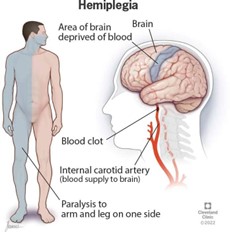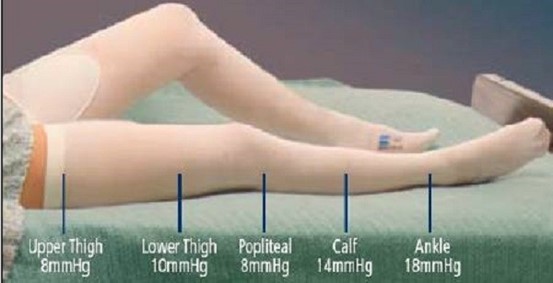A client receives a diagnosis of right-sided paralysis. Which action does the nurse take when assisting the client in transferring from the bed to the wheelchair?
Sits client on the side of the bed and assists the client to stand on right leg
Rolls client to the right side and raises head to sit client on the side of the bed
Lays client flat on the left side and has client stand at the side of the bed
Stands client from the side of the bed on the left leg and pivots client to the chair
The Correct Answer is D
This is because the client has right-sided paralysis and will not be able to bear weight on their right leg. By standing on their left leg and pivoting to the chair, the client can safely transfer from the bed to the wheelchair with the assistance of the nurse.

Nursing Test Bank
Naxlex Comprehensive Predictor Exams
Related Questions
Correct Answer is ["A","C","E","F","G","I"]
Explanation
a) It is important to wear sterile gloves when packing the wound to prevent the introduction of new bacteria into the wound.
c) Donning an eye shield protects the nurse from splash-back or aerosolized particles during irrigation.
e) Sterile normal saline should be used for irrigation to prevent introducing new bacteria to the wound. It should be poured into a sterile irrigation tray.
f) A wound culture should be obtained before the wound bed is irrigated to prevent diluting the specimen with irrigation solution.
g) After irrigating the wound and packing it with sterile gauze, the packing should be covered with an ABD pad to protect the wound and prevent contamination.
h) Assessing pain prior to starting the procedure is important to establish a baseline for pain management and to monitor the client's response to the procedure.
i) Sterile gloves should be worn when removing the old dressing to prevent introducing new bacteria to the wound.
b) Cleaning the skin around the wound with non-sterile gauze is not appropriate as it can introduce new bacteria to the wound.
d) Alcohol-based hand sanitizer is not a substitute for hand washing and should not be used between glove changes as it does not effectively remove all bacteria from the hands.
Correct Answer is C
Explanation
Before applying anti-embolism stockings, the nurse should ask the client to lie supine in bed for 15 minutes. This is because anti-embolism stockings should be applied with the client in a supine position ¹. This helps to promote blood return to the heart and decrease the risk of blood clots ¹.

Whether you are a student looking to ace your exams or a practicing nurse seeking to enhance your expertise , our nursing education contents will empower you with the confidence and competence to make a difference in the lives of patients and become a respected leader in the healthcare field.
Visit Naxlex, invest in your future and unlock endless possibilities with our unparalleled nursing education contents today
Report Wrong Answer on the Current Question
Do you disagree with the answer? If yes, what is your expected answer? Explain.
Kindly be descriptive with the issue you are facing.
